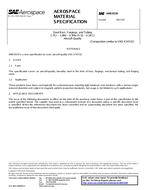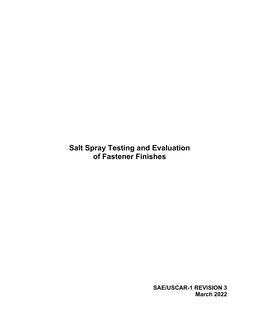Click here to purchase
AIR 1939 provides guidelines in lieu of directives to achieve consistent Life Cycle Cost (LCC) analysis for military aircraft engines. AIR 1939 deals specifically with the direct Life Cycle Cost elements of Aerospace Propulsion Systems. It is recognized that propulsion is normally one part of a larger system, and that through its performance interaction with this overall system, propulsion can often exert a greater influence on system costs than are possible through changes in the direct propulsion system cost elements. AIR 1939 is not directed at this performance interaction issue. Instead, it provides a Life Cycle Cost approach which is a stand-alone measure of propulsion system cost – but which can also serve as a cost building block for broader system-oriented cost-benefit evaluations. AIR 1939 addresses communication of LCC data between equipment suppliers, aircraft engine producers, aircraft manufacturers, and users. The LCC data categories addressed include research, development, test and evaluation (RDT&E); acquisition (initial procurement and investment); and operating and support (O&S) costs. While input and output formats are suggested, calculation procedures and cost methodology are specifically included since many LCC models preferred by the industry are company sensitive or proprietary. The relationship of LCC input data to program phase is described. Ground rules and assumptions are addressed. A glossary of LCC terms is provided. The LCC impact of propulsion systems on other aircraft systems is considered. This document was specifically developed for military propulsion system cost analysis. However, it is believed that a functional relationship exists between military and commercial Life Cycle Cost analysis and that with some interpretation, sections of AIR 1939 might be applicable to commercial propulsion systems as well. AIR 1939 provides a basis for LCC calculations, for monitoring of LCC status resulting from trade studies, and for tracking status against LCC goals in a consistent manner, thus permitting quantitative, comparable assessment. AIR 1939 guidelines recommend that a Life Cycle Cost presentation include consideration of overall cost rather than a sub-optimization of just one or a few cost elements.
Product Details
- Published:
- 12/01/1986
- File Size:
- 1 file , 2 MB


